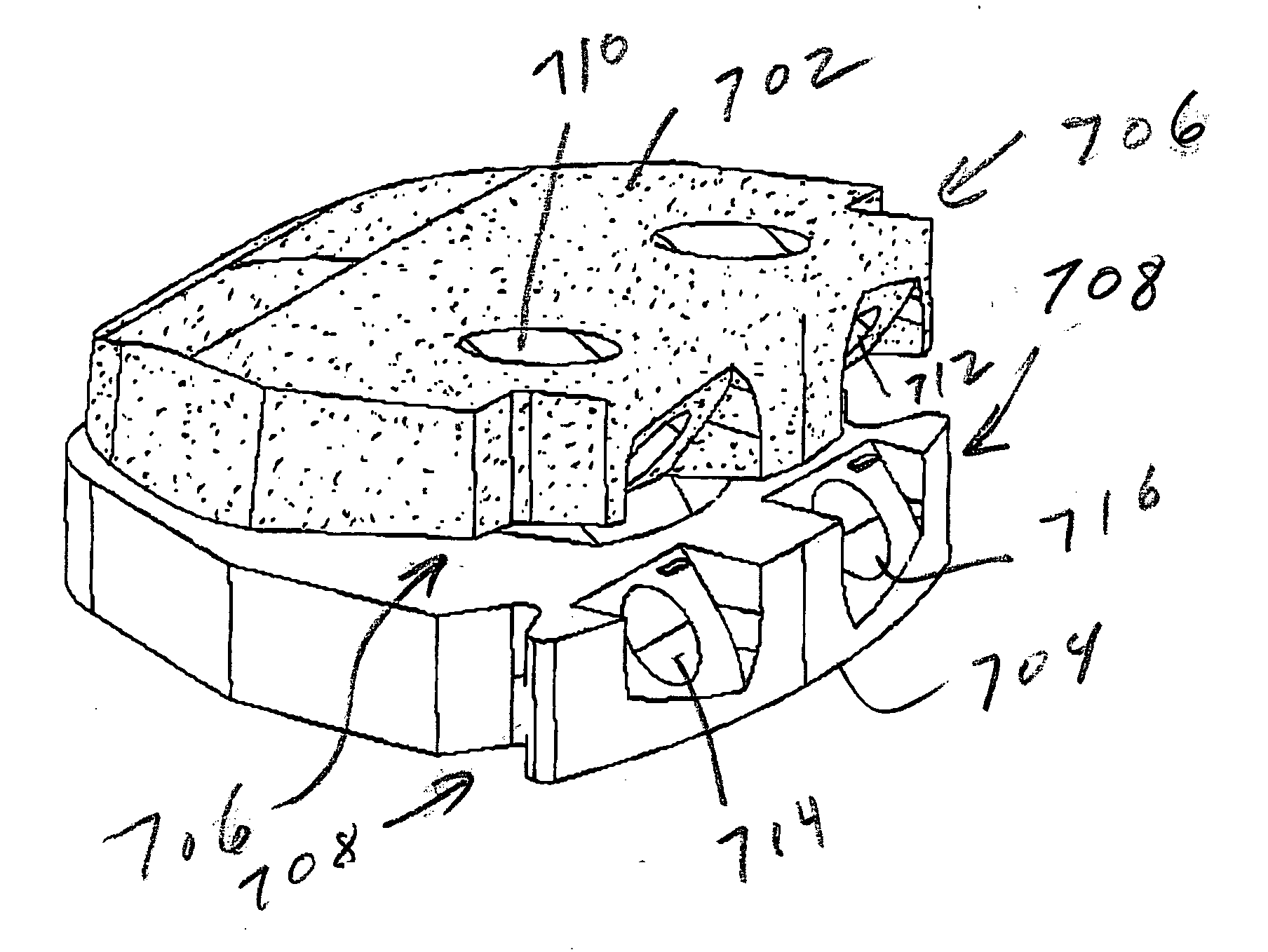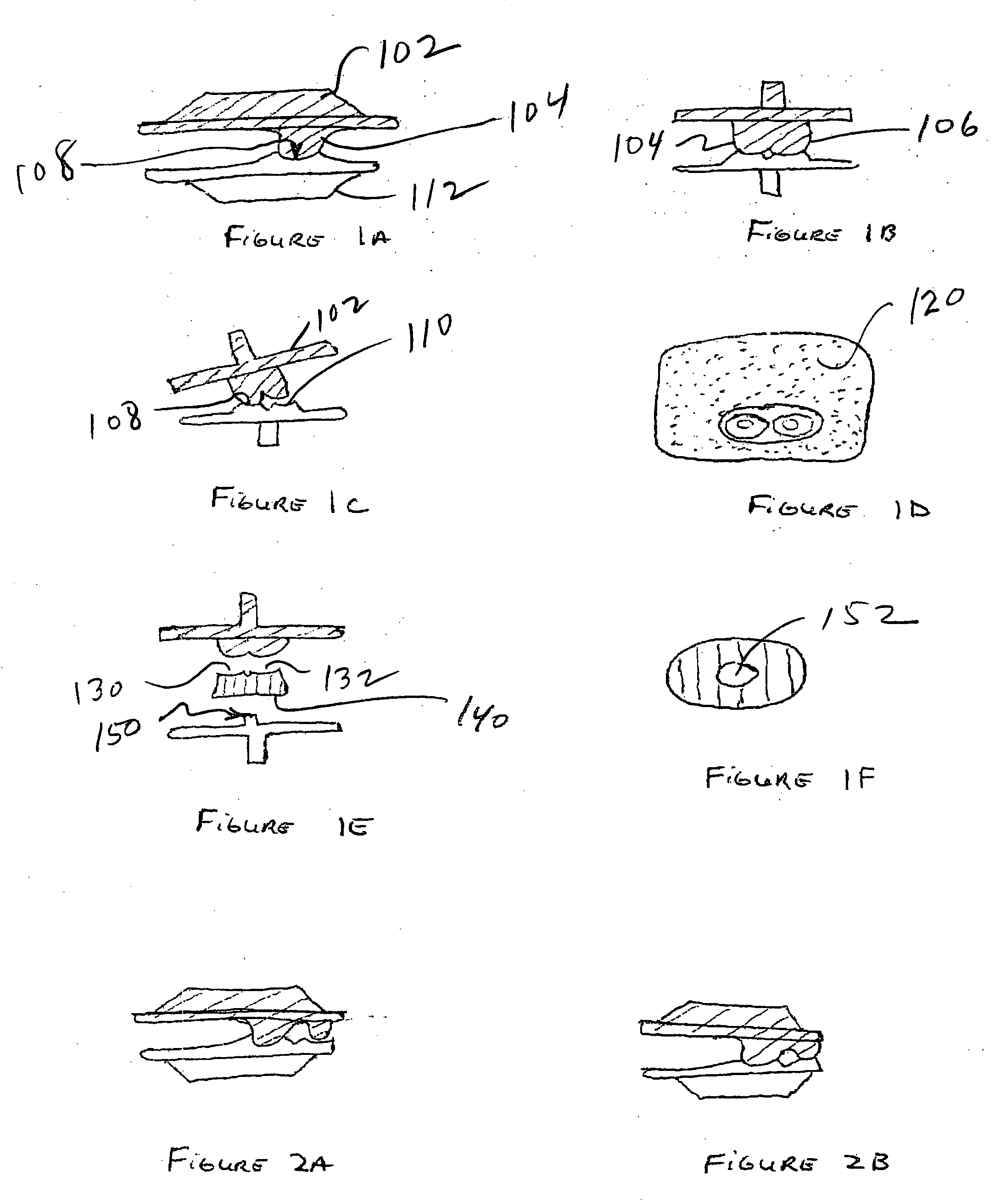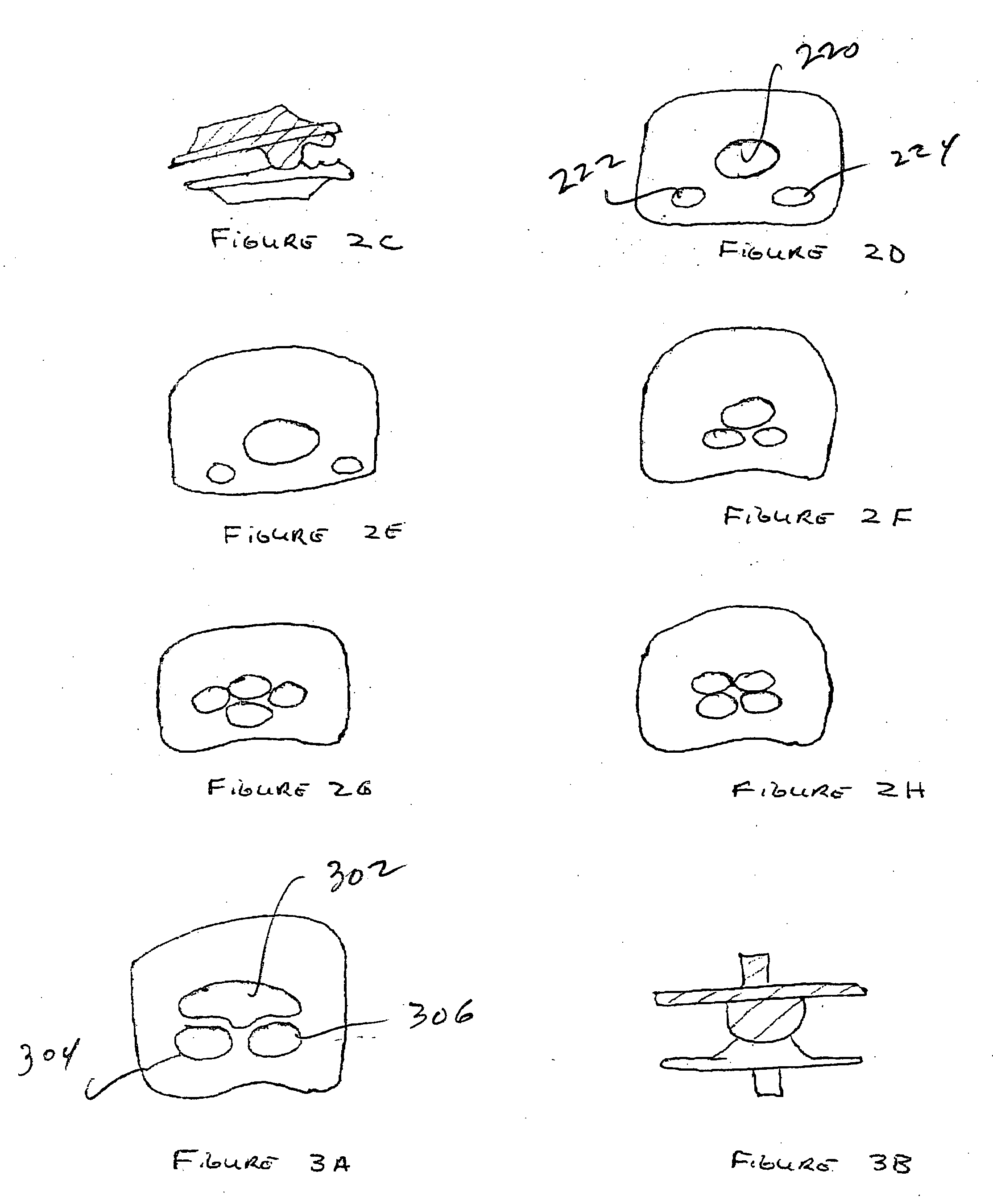Facet-preserving artificial disc replacements
a technology of artificial discs and facets, which is applied in the field of artificial disc replacements with facetpreserving features, can solve the problems of low back pain, reduced risk of separation of adrs from vertebrae above and below, and may not provide sufficient distraction across the disc space by themselves, so as to reduce the load on the facet joints, limit axial rotation, and limit lateral bending
- Summary
- Abstract
- Description
- Claims
- Application Information
AI Technical Summary
Benefits of technology
Problems solved by technology
Method used
Image
Examples
Embodiment Construction
[0070]FIG. 1A is a lateral view of a two-component ADR according to the invention. The superior component 102 includes a set of laterally spaced projections 104, 106 that co-act with respective concavities 108, 110 in an inferior component 112. FIG. 1B is an anterior view of the ADR drawn in FIG. 1A. FIG. 1C is an anterior view of the ADR drawn in FIG. 1B, showing how the ADR facilitates lateral bending of the spine. The ADR articulates in the adjacent convexity and concavity when the ADR allows lateral bending to the opposite side. The ADR articulates through both sets of concavities and concavities during flexion and extension while resisting axial rotation.
[0071]FIG. 1D is a view of the top of the inferior ADR endplate (EP) drawn in FIG. 1A. Area 120 represents a cushion material. This embodiment of the ADR is similar to the ADR taught in my co-pending application U.S. Ser. No. 10 / 434,930 (see FIG. 10B). The restricted motion of the ADR helps protect the cushion material. The cu...
PUM
 Login to View More
Login to View More Abstract
Description
Claims
Application Information
 Login to View More
Login to View More - R&D
- Intellectual Property
- Life Sciences
- Materials
- Tech Scout
- Unparalleled Data Quality
- Higher Quality Content
- 60% Fewer Hallucinations
Browse by: Latest US Patents, China's latest patents, Technical Efficacy Thesaurus, Application Domain, Technology Topic, Popular Technical Reports.
© 2025 PatSnap. All rights reserved.Legal|Privacy policy|Modern Slavery Act Transparency Statement|Sitemap|About US| Contact US: help@patsnap.com



